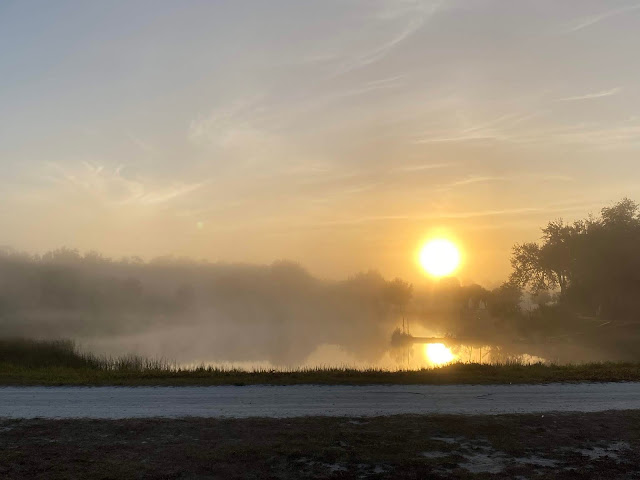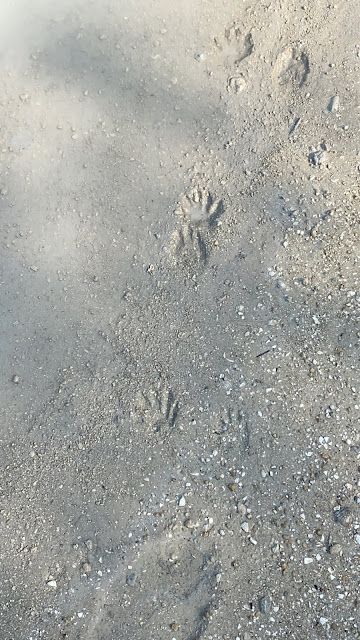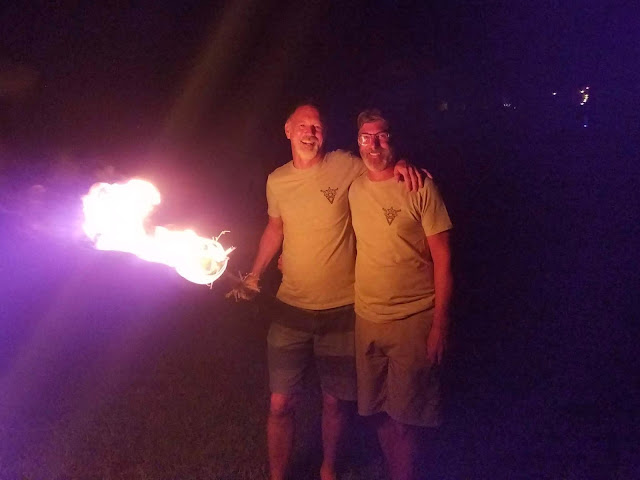On 11Apr we joined our new friends from Ohio (Ray and Jeff) post quarantine to go to the Bird Sanctuary Trail. We drove 6 miles from the campground and turned down a dirt road to a large parking area. The birds in this sanctuary were beautiful and the amount of alligators was beyond belief. The day started off overcast and cloudy with a lot of bird activity then the sun appeared. The temperatures increased and got up to the 80's.
A man-made wetland designed to aid in Everglades restoration, the Stormwater Treatment Area 5/6 (STA-5/6) rests on approximately 17,000 acres in eastern Hendry County. This South Florida Water Management property has become one of the premier bird-watching areas in the state through an enduring partnership with the Hendry-Glades Audubon Society, which offers limited, seasonal escorted driving tours of the area by reservation. More than 200 bird species have been confirmed during these excursions! In addition, a portion of the Florida National Scenic Trail runs along the L-3 levee on the west side of the STA. Shell-rocked parking, an informational kiosk, picnic shelter, restrooms and over 20 miles of trails on unpaved levee roads including a covered shade shelter and a boardwalk are all open to the public throughout the 10-square-mile area. (taken from the Hendry Glade Audubon Brochure found online at hendrygladesaudubon.org)
 |
| Thistle plant was at least 6 feet tall blowing in the wind. The beauty of the flower is just majestic |
 |
| Red Winged Blackbird in flight |
 |
| These butterflies were clustered together and did not even flinch when we approached |
 |
| Baby alligator looks up just as we looked down at him |
 |
| One of the three we were looking at from the bank of the canal |
 |
| You can see for miles, this area is vast and flat |
 |
| The levies go for miles, this particular one is 13.5 miles long with canals on either side. Keith is walking with Ray and Jeff (from the campground post their quarantine) |
 |
| Swallow Tailed Kite |
 |
| Boat-Tailed Grackle |
 |
| Egrets in flight |
 |
| Crested Caracara |
We continue to explore the campground, taking in new paths and finding new interesting places, flora and fauna. The hikes are invigorating, for mind and body. Getting out everyday and walking looking for new bird species, snakes, and flora is so relaxing and peaceful.
 |
| American Crow |
 |
| Black Vultures |
 |
| Stormwater Treatment Area 5/6 |
The wildlife refuge is located on approximately 17,000 acres in eastern Hendry County, Stormwater Treatment Area 5/6 (STA-5/6) has become one of the premier bird-watching areas in Florida through a long-standing partnership with the Hendry-Glades Audubon Society. The entrance is off State Highway 835 to Deer Fence Canal Road in rural Clewiston.
 |
| Killdeer out for a leisurely walk along the levy |
 |
| Red-shouldered Hawk get out of the late morning sun |
 |
| Large male Alligator near the treatment center |
 |
| Pair of Tricolored Herons take flight from the canal below |
 |
| Tricolored Heron |
 |
| Green Heron |
 |
| During our hike we came along these limes and some guava |
 |
| Jeff and Ray as we walk back to the car late in the morning, it was in the 90's and very humid |
 |
| Keith in the lead, Ray and Jeff walking back in the oppressive heat |
 |
| Eastern Meadowlark on the wire |
 |
| Halloween Pennant, Dragonfly |
 |
| Ring Snake |
The temperatures have soared here consistently in the mid to high 90's with extreme humidity, the numbers of nats and mosquitos have grown. We are now getting severe thunderstorms rolling through for the next few days according to the forecast until 1May.
After the rainstorms we appreciate the cooler evenings and early morning walks. The mist rising over the forest and fields are wonderful to watch. Our little piece of spiritual, magical paradise. We are very lucky to be here away from the cosmopolitan areas.
 |
| Gulf Fritillary or passion butterfly |
 |
| Regal Darner, species of darner in the family of Dragonfllies known as Aeshidae. Beautiful green eyes and body. |
 |
| Abbott's Bagworm Moth case made up of twigs |
With much anxiety we prepare to leave Vitambi Springs on Monday morning for Fort Myers and the outside world. We have loved our time in the campground for 3 months protected from the chaos of the world we live in.




















































No comments:
Post a Comment